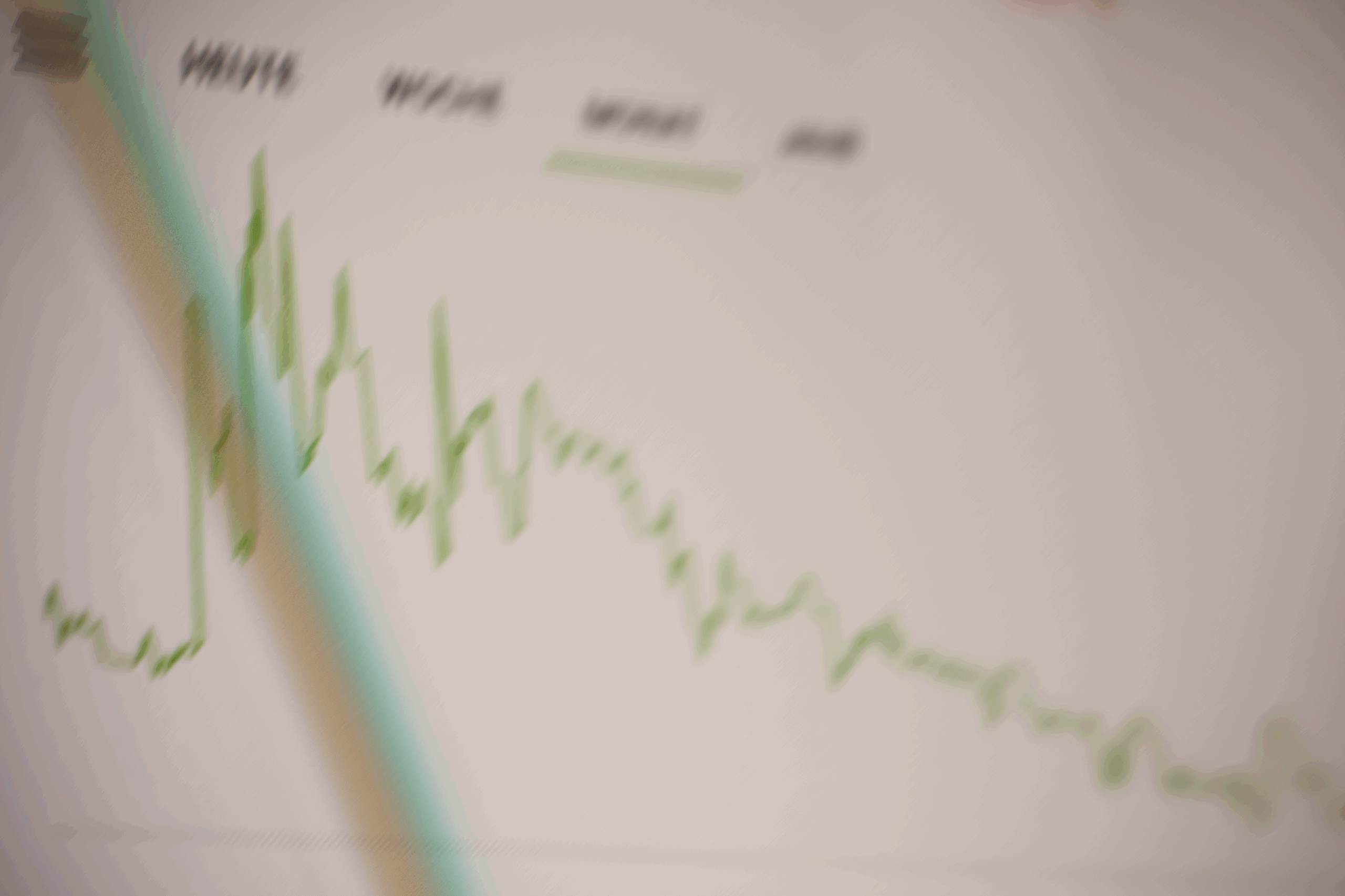Continue Reading
Biggest Finance Newsletter for Women
Join 200,000 other people interested in money, power, culture, and class.
Subscribe
I rarely go physically grocery shopping anymore, opting instead for the convenience of delivery orders of roughly five days’ worth of meal-making materials at a time. But this past Saturday, I decided to take the entire day off (¡escándalo!)—so why not take the time to drive across town and peruse the produce in person?
Before heading out, I ended up on the phone with my mom. We began with the usual—plans for the weekend, a recap of recent travel—but at some point before I pulled into the parking lot, we landed on the topic of the economy. She reads this newsletter (hi, Mom) so I wasn’t sure where the conversation was about to go. We possess strikingly different politics, for the most part, which meant broaching this topic at the precise moment I blasted through the automatic doors into the (very public) air-conditioned box of California’s 10th most popular grocery store was a real roll of the conversational dice.
>
“I figured I was about to have to set the record straight for mother dearest.”
The subject was top of mind for me because, last week, I invited not one, but two economists to my show to chip away at the mystery of economic data and sentiment. One hailed from Harvard, an institution hardly known for its understanding of the average working person’s plight, and the other from Moody’s, an economic research firm based in the modest little commercial hub of middle class Americana, Manhattan.
As I am a cornfed Swiftie* from Hebron, Kentucky, home of the Amazon Regional Fulfillment Center (four of 15 nationwide, Wikipedia tells me!), who possesses little more than an undergraduate degree in *survey says* not economics, inviting these bastions of capitalism into my domain of vibes was intended to add a little intellectual heft to my arguments. I had spent hours researching, writing, editing, and producing this episode (and phoned two professionals to do it), so I figured I was about to have to set the record straight for mother dearest.
“Actually, before you tell me what you think, can I tell you how I see it?” her Michigan accent boomed out of the earpiece (in a cursed lapse of judgment, I forgot headphones) as I reached into the refrigerated section to inspect the date on a carton of half-and-half. “Sure,” I responded, bracing for impact.
I’m paraphrasing, but this is essentially what came out of her mouth next: “It feels like this… [pregnant pause, as I could tell she was trying to be sensitive in her word choice] administration keeps trying to tell us that everything’s great, and we’re just too stupid to see it. But your average person doesn’t have real investments! They might not own a home. Everything costs 20% more than it did a few years ago. So they just get the pain of inflation, and none of the benefits. It’s like we have two economies. Things are really good…for some people.”
The line went silent. I stared into my cart of overpriced groceries.
“That’s…pretty much exactly the conclusion that I drew on the podcast last week,” I said, stunned that she managed to leapfrog all my careful research and expert sourcing to go straight for the obvious conclusion.
What followed was a legitimately interesting exchange of ideas in which I told her I sometimes feel like I’m on the other end of a psy-op when I hear economists describe things like inflation: the idea that things must keep rising in price so people will need to keep working hard because we have to keep producing more, and more, and more, and that this amounts to a quote-unquote Good Economy™. In this framework, economic pain and a salient sense of risk aren’t unlucky collateral damage. They serve a purpose.
>
“More, more, more to what end?”
But what’s the point?! I sometimes find myself wanting to scream into the void. More, more, more to what end? The logic feels circuitous; it must get bigger so people can get richer and buy more stuff, which is important because that makes it bigger, which makes people richer, so they can buy more stuff.
The US economy feels stuck in the same doom loop that many US households are stuck in: a chronic case of losing the plot.
For those in the lower- to middle-income strata of the income distribution (one of the two economies mentioned in the episode), there is little choice in whether or not they must play along. It’s not an exaggeration to call the system they’re stuck in a trap. (It’s a trap that many people maneuver their way out of through some combination of ingenuity, luck, and hard work, sure, but it’s not designed to produce that outcome.) “Buying more stuff” in this scenario usually means paying your rent and keeping enough gas in your tank to get to work, not participating in a consumerism arms race.
But the biggest miscalculation someone in the upper portion of this income distribution can make is to mistake this narrative of financial nihilism as their own, as reason to voluntarily step into the trap, via pledging your life and paycheck to an insatiable search for more, bigger, better. How’s that old saying go about the American Dream? “Normal is getting dressed in clothes that you buy for work, driving through traffic in a car that you are still paying for, in order to get to a job that you need so you can pay for the clothes, car and the house that you leave empty all day in order to afford to live in it.”
Financial pundits have long been torn about how much “choice” to assign to these decisions—the personal finance education of the 1990s and 2000s focused almost solely on individual choice, while the material of the 2010s and 2020s seems to take a wider view. I think part of the reason they’re (we’re?) torn is because the degree to which participation can be classified as a “choice” (read: voluntary) varies widely along this class spectrum.
>
“The degree to which participation can be classified as a “choice” (read: voluntary) varies widely along this class spectrum.”
Ramit Sethi alluded to this double reality in the Politico interview I shared last week when he acknowledged both the chronic unaffordability of housing and the fact that the couples he interviews for his podcast often choose to pay for luxury vacations and unnecessary home renovations with high-interest credit card debt, thereby tethering themselves to empty savings accounts and jobs they don’t like.
Your level of choice expands or contracts depending on which “economy” you exist within, and I remain impressed and hopeful that—from our two different ends of the spectrum—my mom and I independently came to the same conclusion.
Real structural problems exist, and for some people, those problems represent the extent of their financial woes. For others, these structural barriers play a much smaller role—and if you’re fortunate enough to opt out of the more, bigger, better rat race (even in small ways)…do you want to?
—
*I read an absolutely brutal book review over the weekend in which the writer, Ann Manov, used the phrase “cornfed Swiftie” to describe the way the author she was critiquing no doubt viewed the “unwashed plebeians” leaving bad reviews on her Goodreads page between “thumbing through Colleen Hoovers,” and I decided immediately to don the phrase like an ironic neck scarf.
June 3, 2024
Looking for something?
Search all how-to, essays, and podcast episodes.
Explore
While I love diving into investing- and tax law-related data, I am not a financial professional. This is not financial advice, investing advice, or tax advice. The information on this website is for informational and recreational purposes only. Investment products discussed (ETFs, index funds, etc.) are for illustrative purposes only. It is not a recommendation to buy, sell, or otherwise transact in any of the products mentioned. Do your own due diligence. Past performance does not guarantee future returns.
Money with Katie, LLC.
Terms & Conditions | Privacy Policy
This Site Was Built by Brand Good Time



